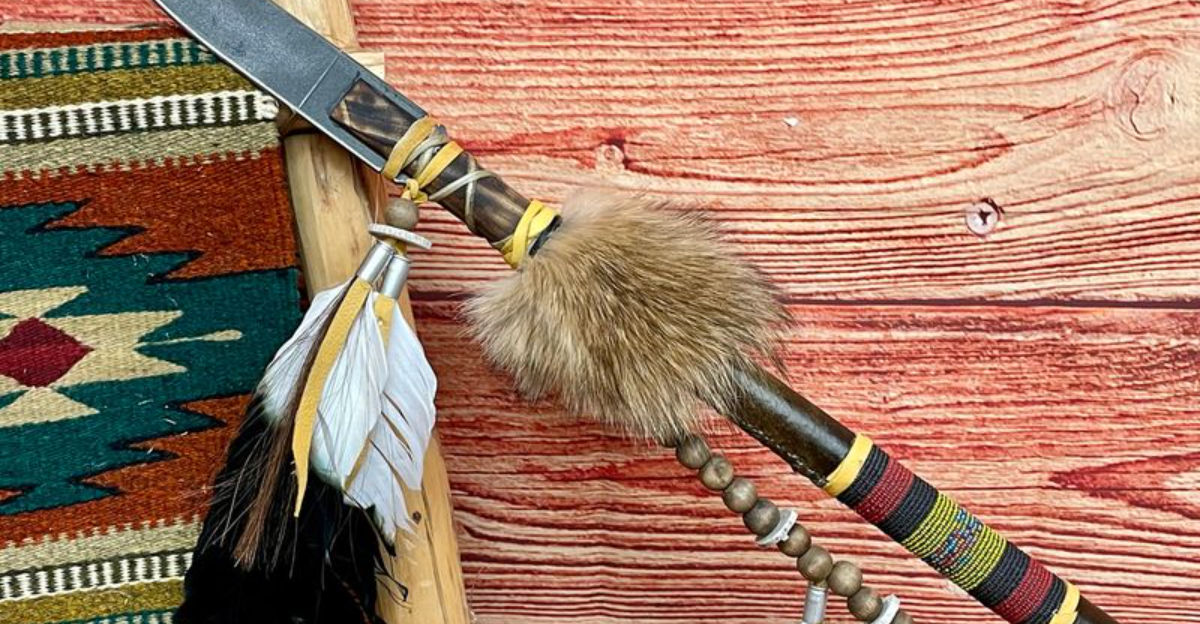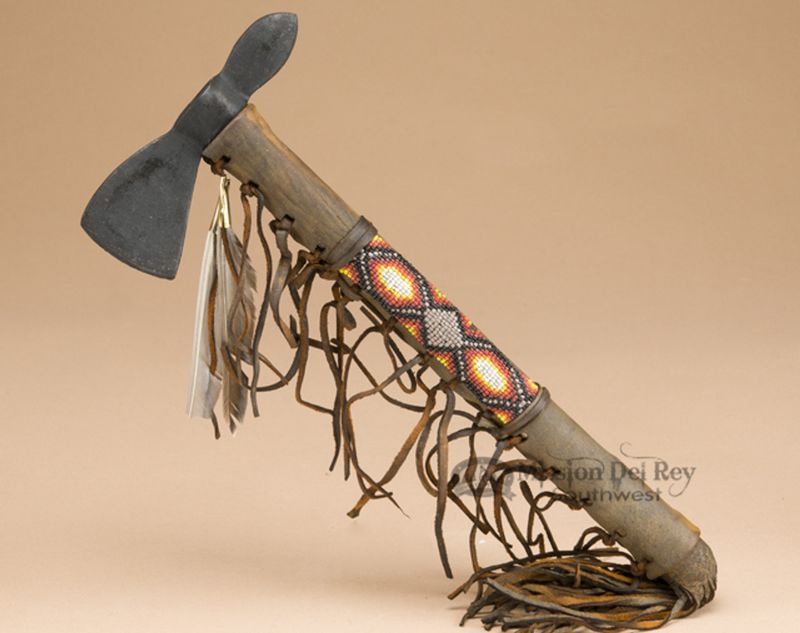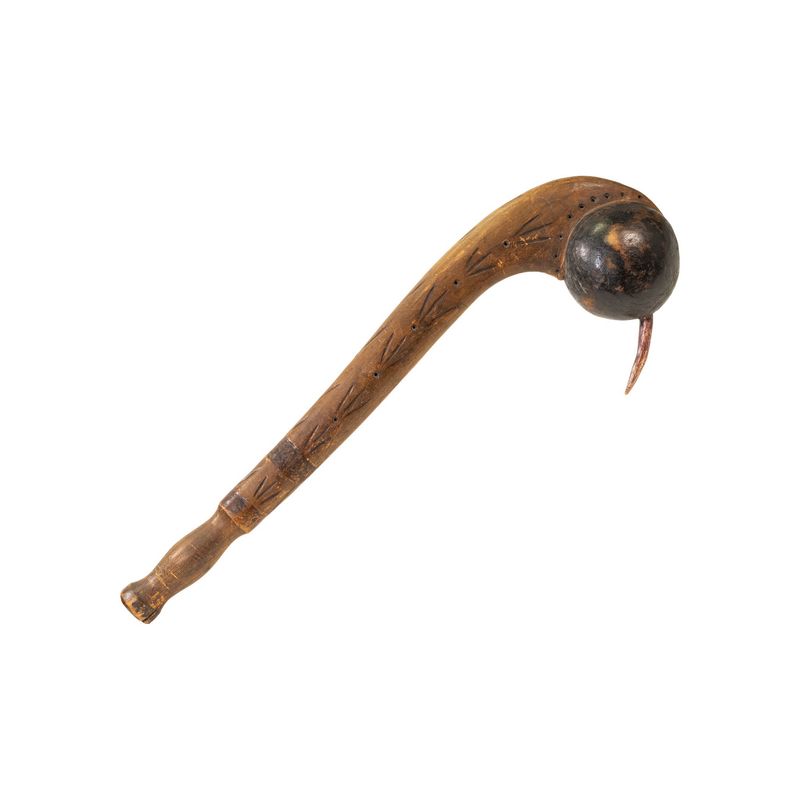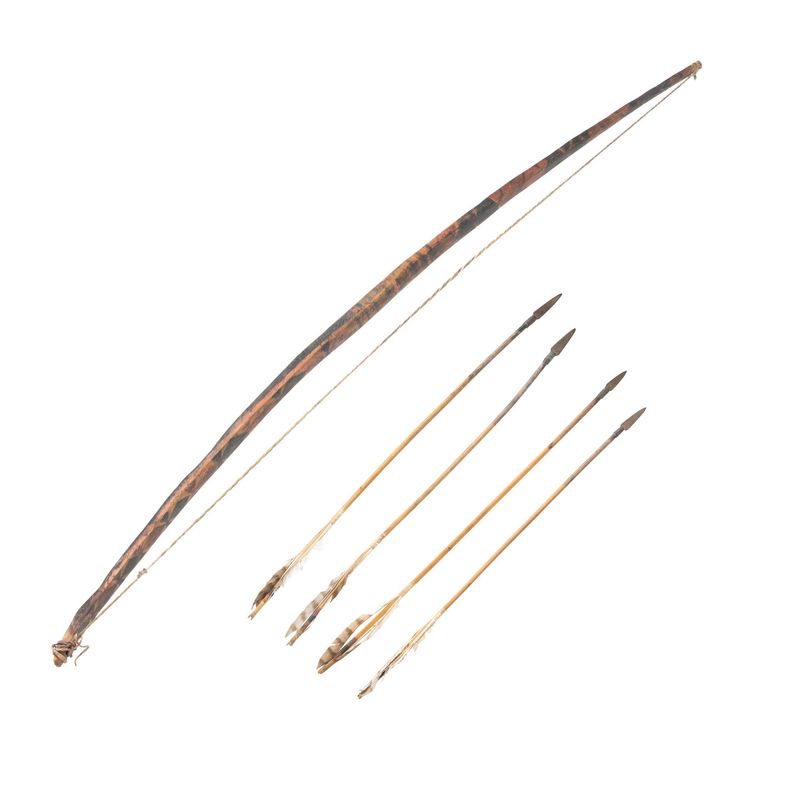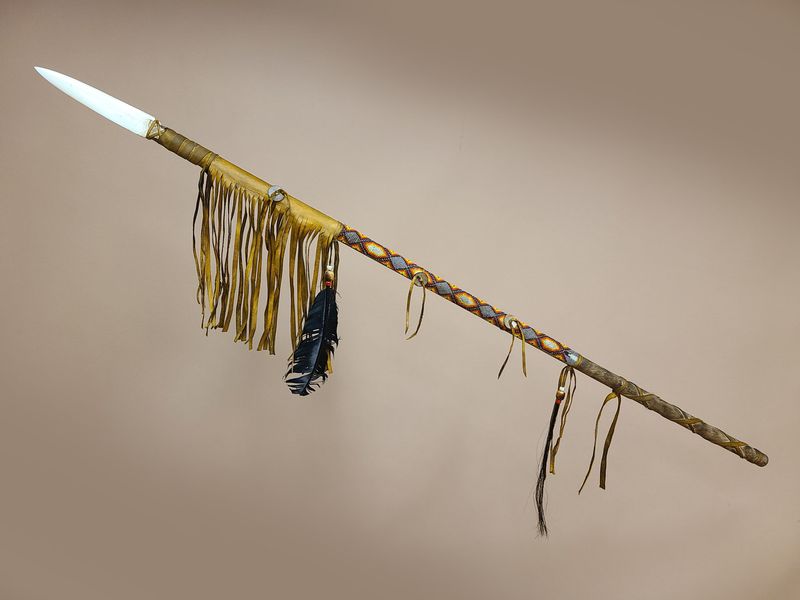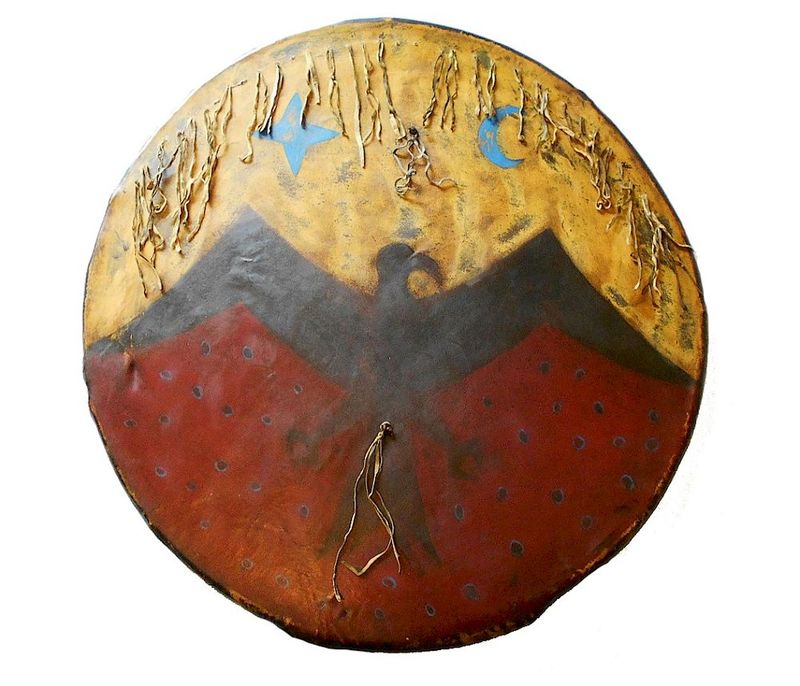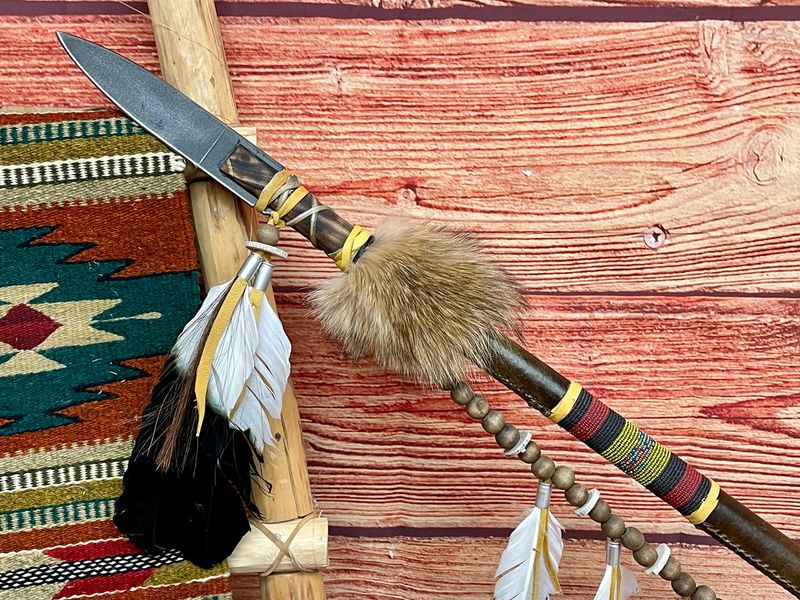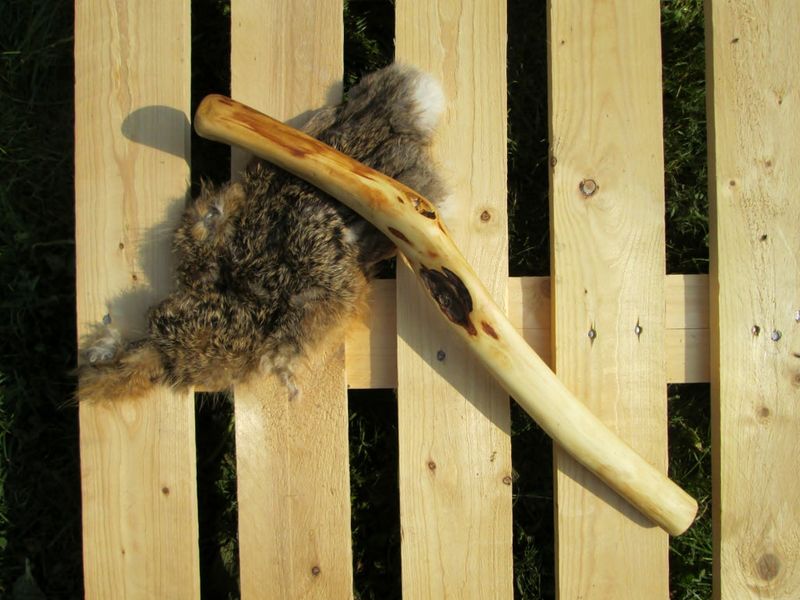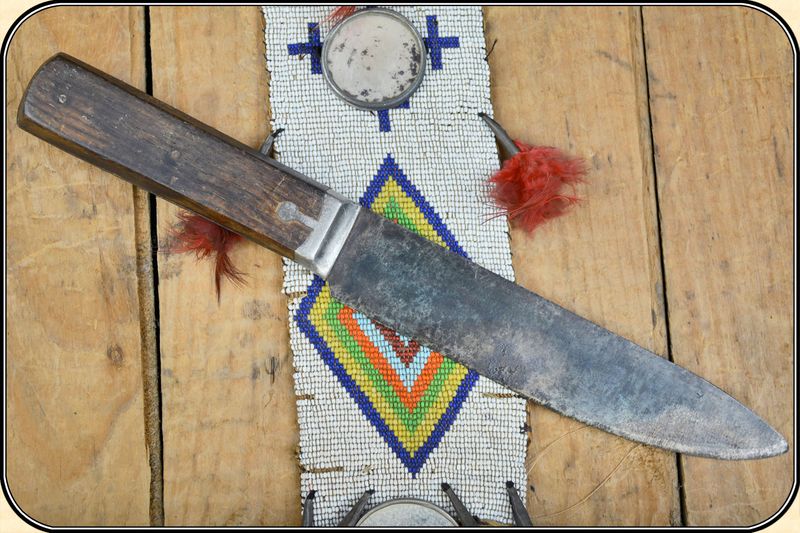Native American tribes during the Old West possessed a rich arsenal of handmade weapons, each imbued with deep symbolism and cultural significance. These tools were not only crafted for survival and warfare but also served as profound expressions of identity, spirituality, and social status. This blog post explores ten such weapons, offering a glimpse into their multifaceted roles and meanings.
1. Tomahawk
The tomahawk stands as an iconic symbol of Native American ingenuity and versatility. With its sharp blade and balanced heft, it served as both a formidable weapon and a practical tool. Warriors wielded it with precision in close combat or hurled it with deadly accuracy. Beyond its physical utility, the tomahawk held ceremonial value, often used in peace treaties. When tribes buried the tomahawk, it marked the end of hostilities—a gesture steeped in symbolism. Adorned with beads and feathers, each tomahawk reflected its owner’s identity, commemorating personal victories and tribal heritage.
2. War Club
Carved from dense hardwood or chiseled from stone, the war club was a revered weapon among many tribes. Its robust construction made it ideal for hand-to-hand combat, delivering powerful, bone-crushing blows. Beyond the battlefield, the war club symbolized personal honor and valor. Warriors often personalized their clubs with intricate carvings that told tales of their bravery, while feathers and beads signified accomplishments. Owning a finely crafted war club was not just about martial prowess; it was a testament to the warrior’s skills, courage, and standing within the community.
3. Bow and Arrow
The bow and arrow were indispensable tools for both hunting and warfare, embodying the essence of self-reliance. Skillfully crafted from flexible wood and sinew, these weapons were extensions of the warrior’s spirit. The bow’s graceful arc and the arrow’s swift flight carried more than physical force; they were believed to channel spiritual energy. Arrows often bore meaningful designs, serving as messengers of intention or carrying protective charms. In the hands of a skilled archer, the bow and arrow became a dance of precision and power, a testament to ancestral wisdom and artistry.
4. Lance (Spear)
The lance, with its elongated reach, was a preferred weapon for hunting large game and engaging in battle. Crafted from sturdy wood and tipped with stone or metal, it allowed warriors to strike from horseback or foot. More than a mere weapon, the lance was a canvas for personal and tribal expression. Feathers, paint, and animal parts adorning the spear spoke of spiritual power and individual achievements. Each decoration told a story, encapsulating the warrior’s personal journey and the collective heritage of the tribe.
5. Stone Knife
The stone knife was a tool of survival and a symbol of spiritual significance. Carved from sharp stones like obsidian or flint, it was indispensable for combat, skinning, and rituals. The knife’s presence in ceremonies connected the user with the creator’s spirit, believed to possess protective or healing energies. Its sharp edge and durable build were complemented by a handle wrapped in leather or sinew. Each stone knife was a masterpiece, reflecting the bearer’s craftsmanship and the profound connection between the physical and spiritual realms.
6. Shield
The shield was not only a defensive tool but a sacred object believed to offer spiritual protection. Constructed from buffalo hide stretched over a wooden frame, it was both lightweight and sturdy. Warriors decorated their shields with visions seen in dreams or protective symbols, believing these images would guard them in battle. Animal spirits featured prominently, offering strength and courage. Each shield was a manifestation of its owner’s spiritual journey, a personal talisman that connected the warrior to the divine, ensuring safety in the chaos of conflict.
7. Atlatl (Spear Thrower)
The atlatl, an ingenious spear-thrower, extended the reach and force of a warrior’s arm, transforming spears into projectiles of impressive velocity. This ancient tool was not only a testament to hunting skill but a link to ancestral traditions. Used in ceremonial hunts, the atlatl honored the old ways and ensured survival. Its construction, often from wood or bone, featured carvings that connected the user to their lineage. Mastering the atlatl required precision and strength, making it a revered skill among warriors and hunters alike.
8. War Lance (Decorated with Feathers and Bones)
The war lance, an emblem of power, was distinct from its hunting counterpart, adorned with elaborate decorations for battle or ceremonial display. Warriors embellished these lances with feathers, bones, and tribal symbols, each element narrating tales of vision quests or tribal status. In battle, the lance was more than a weapon; it was a statement of the warrior’s prowess and a testament to their spiritual journeys. The decorations served as a visual record of personal and tribal achievements, making each lance unique and deeply meaningful.
9. Throwing Stick (Rabbit Stick)
The throwing stick, or rabbit stick, was a versatile tool for hunting small game and at times for combat. Shaped from wood into a curved projectile, it demonstrated adaptability and survival prowess. When food was scarce, the throwing stick became crucial for providing sustenance. Its simplicity belied its effectiveness, as a well-aimed throw could secure a meal. Beyond practicality, the stick symbolized resourcefulness and the skill to provide for the community. Each throwing stick was a unique expression of craftsmanship, reflecting the ingenuity of its maker.
10. Scalping Knife
The scalping knife, though controversial, was a symbol of bravery and power among Plains tribes. Small and sharp, it was used in warfare for taking enemy scalps—a practice steeped in cultural significance. To take a scalp was to claim a victory, a demonstration of courage and honor. The knife itself, often with a bone handle, was a personal item, carried with pride. While its use might appear gruesome, it played a role in the complex tapestry of Native American warfare, where symbols of personal valor were paramount.
